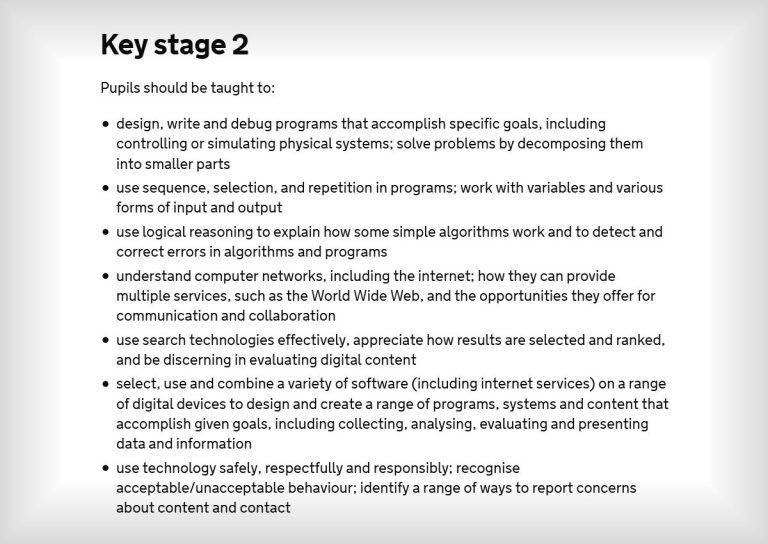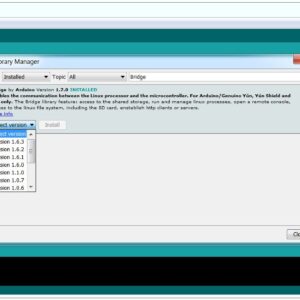Pupils at key stage 2 should be taught to:
- design, write and debug programs that accomplish specific goals, including controlling or simulating physical systems; solve problems by decomposing them into smaller parts
- use sequence, selection, and repetition in programs; work with variables and various forms of input and output
- use logical reasoning to explain how some simple algorithms work and to detect and correct errors in algorithms and programs
- understand computer networks, including the internet; how they can provide multiple services, such as the World Wide Web, and the opportunities they offer for communication and collaboration
- use search technologies effectively, appreciate how results are selected and ranked, and be discerning in evaluating digital content
- select, use and combine a variety of software (including internet services) on a range of digital devices to design and create a range of programs, systems and content that accomplish given goals, including collecting, analysing, evaluating and presenting data and information
- use technology safely, respectfully and responsibly; recognise acceptable/unacceptable behaviour; identify a range of ways to report concerns about content and contact
National Curriculum Computing Programmes of Study
- Primary School Coding Curriculum Key Stage 1
- Junior School Coding Curriculum Key Stage 2
- Secondary School Coding Curriculum Key Stage 3
- Secondary School Coding Curriculum Key Stage 4
Continue Reading National Curriculum in England: Computing Programmes of Study





Relative Frequencies of Letters in the English Language Graph #Python #Language #Teachers...
Importing the Arduino HC-SR04 Ultrasonic Sensor Library Zip File #Arduino...
Arduino IDE Get Board Information #Arduino...
Arduino UNO Attached to a PC via USB Cable #Arduino...
Arduino Driver Software Installed Successfully on COM4 #Arduino #Software...
UCAS Teacher Training applications at End of Cycle 2016 #UCAS #Teacher #Training...